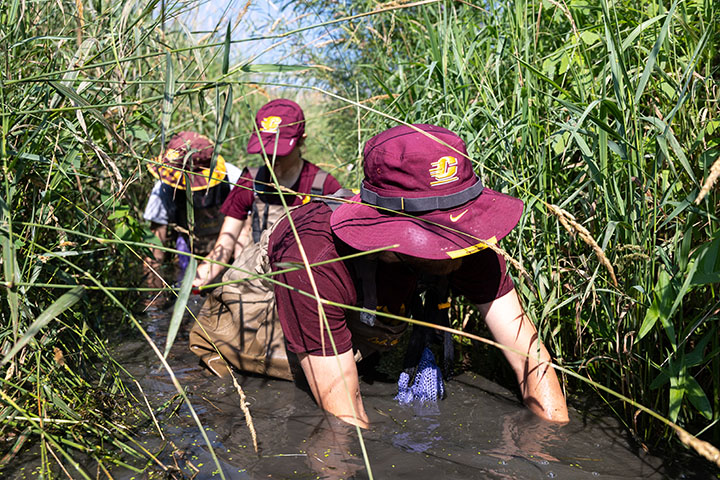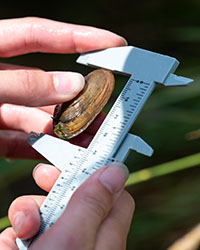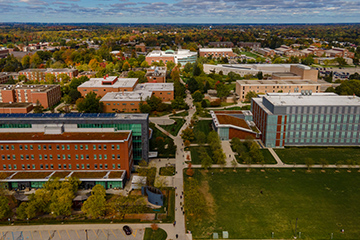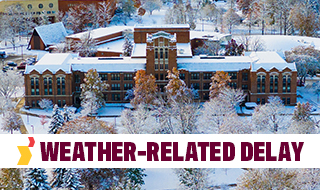Playing in the mud unlocks new locations for mussels
Graduate student identifies new habitats to look for important mollusk

A Central Michigan University graduate student could upend some of our assumptions about an important freshwater mollusk after playing in the mud.
Aaron Vlasak was updating a 40-year inventory of mussels in the Tittabawassee River watershed when he noticed something in the data.
“There were crazy ups and downs,” said Vlasak, a Midland native working on his master’s in biology. Some spots had more species of mussels than in the 1980s, some had fewer, some areas had totally lost species that had been there in the past. The results in some places were dramatic.

What stood out the most was that some of the spots were creeks, streams and county drains—permanent waterways not previously considered prime mussel habitats. It was an opportunity to fill a gap in the knowledge, he said.
For an invertebrate that flies under everyone’s radar, the stakes were surprisingly high.
Michigan’s 43 species of mussels perform many important jobs. They clean water by filtering out contaminants and particulates. Where mussels thrive, the water quality is generally good. Where mussels die off, the water quality may not be so good or it is an indication that something in their habitat has changed.
Figuring out where they lived meant physically visiting choice waterways. It also meant digging around in the mud looking for mussels or evidence of mussels.
Spending the summer playing in water is one of the things that brought Vlasak to CMU, so the work had some appeal, he said.
He found mussels in places where they wouldn’t have looked before. That includes Slippershells, which are Threatened species on Michigan’s Endangered Species List.
That could be good news for the Slippershells, because finding them someplace new might mean there are more of them than previously believed, Vlasak said.
He also found mussel shells in places where there were no live mussels at all. That means the mussels living there died, said Daelyn Woolnough, the biology faculty overseeing Vlasak’s research. They can knit together clues to solve a mystery.
They can tell the age of mussels based on the size of their shells. Knowing the age of mussels and having an estimate of how long ago they died will help researchers piece together what might have happened to them.
“It’s sort of like forensic ecology, solving these issues in our waterways” Woolnough said.
Vlasak hopes to publish his findings so that mussel researchers in other parts of the state, and around the world, can build off it to possibly expand our understanding of Michigan’s freshwater mussels.
Once he completes his master’s degree, Vlasak said he’d like to work for the state or federal government doing biology.



